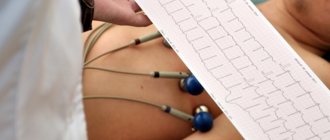Today there are a large number of industrial factories that are located near residential areas. Some people work in such factories and are exposed to hazardous chemicals every day. Ammonia (hydrogen nitride) has a particularly negative effect on the human body, so you need to know about the scope of use, features and possible consequences of poisoning with a chemical substance. If simple safety rules are not followed, you can easily become poisoned by toxic ammonia.
Features of hydrogen nitride and its scope of use
Ammonia is a gas that has no color, but has a pronounced suffocating odor. It is impossible to confuse this chemical substance. Hydrogen nitride is used in liquid form as part of household solvents. Its concentration in household chemicals reaches 25-30%. The chemical compound is most often found in solution form in solvents and cleaners for industrial use.
Gas in its pure form is not used, as it has a negative toxic effect on human health. This factor does not prevent people from using hydrogen nitride for the manufacture of finishing and paint materials. In traditional medicine, ammonia is known as ten percent ammonia. The solution is used to bring a person to consciousness during a fainting state or to stimulate vomiting in case of poisoning and other pathologies. For the treatment of neurology and myositis in medicine, agents are often used in the form of liniment, which includes ammonia, and therefore ammonia.
Content:
- Features of hydrogen nitride and its scope of use
- How can a person become poisoned by ammonia?
- Symptoms of chemical poisoning
- First emergency aid for ammonia poisoning
- What to do after poisoning?
- About the consequences
- Preventive measures
In addition, the concentrated solution is used to fertilize land. The gas is used to make explosives, and ammonia is also needed to make freezers and refrigerators. In domestic conditions, hydrogen nitride is used to clean surfaces or fabrics from paint, coffee, varnish, oil and grease stains, mold and milk. Cleaners often use a concentrated solution to wash tiles, floors and glass.
Although ordinary people rarely encounter toxic fumes in their daily lives, they still need to be very careful with products that contain ammonia. Correct and timely provision of first aid for hydrogen nitride poisoning can save a person’s life and minimize possible complications.
How can you identify methanol poisoning and assess its severity?
As for laboratory research methods for suspected methyl alcohol poisoning, they can be differentiated into the following groups: 1. Toxicological studies to determine the concentration of methyl alcohol in blood plasma (serum) and urine. Depending on the indicators in the blood, the following degrees of damage to the body are distinguished: • >20 mg/dl (1 mg/dl = 0.1 mg/l) – confirmation of toxic effects. • At 100 mg/dl, damage and demyelination of the optic nerves are observed. • >150 mg/dl – fatal intoxication. 2. Further worsening of the condition with the development of acidosis is accompanied by a decrease in the concentration of methanol in the blood as a result of its breakdown, so other markers will be indicative - measurement of pH, concentration of potassium and sodium ions in the blood serum, determination of the activity of liver enzymes (AlAT and AST), creatine phosphokinase ( reflects toxic damage to the myocardium) and amylase (pancreatic enzyme).
Typically, monitoring of basic biochemical parameters is carried out in intensive care and resuscitation departments using special equipment that allows monitoring pH, gases and blood electrolytes.
How can a person become poisoned by ammonia?
The toxic compound in the air should not exceed 20 milligrams per 1 cubic meter. If a person stays in a room with a high concentration of a substance, there is a high risk of poisoning from toxic fumes. Ammonia emissions can form in the air due to accidents at industrial plants and stations. You can get gas poisoning when working in a treatment pit or sewer if you do not use individual sealed protective equipment.
When the chemical enters the blood and inner layers of the skin, hydrogen nitride affects the blood vessels, causing them to dilate and the pressure in the arteries to drop. Due to a sharp decrease in blood pressure, collapse may develop. The compound has an irritating effect on the mucous membrane of the organ of vision, nose, pharynx and other organs, resulting in a chemical burn.
Your actions before the accident:
- Remember the nearest enterprises that use or produce hazardous chemical substances. Purchase personal protective equipment for all family members. Find out the procedure for reporting possible accidents at these enterprises, for example by calling 01.
- Learn to use available materials to protect your respiratory system (making a cotton-gauze bandage soaked in a 2% baking soda solution). Consider the need to seal window and door openings and ventilation hatches.
- Determine your actions in case of evacuation. You need to take a first aid kit, clothes, documents, food, and money with you.
- Tell children what to do if an accident occurs and no adult is around.
- Learn to provide first aid to victims and teach all family members.
You need to take a first aid kit, clothes, documents, food, and money with you. Photo: Emergency Rescue Service
Symptoms of chemical poisoning
There are three main ways gas enters the human body: the first is through the eyes, the second is through the skin, and the third is through the respiratory tract. The gaseous substance has high destructive activity, so the first signs of poisoning appear instantly. Even if a person breathes toxic fumes for a short period of time, there is a risk of poisoning.
The first symptoms of ammonia poisoning include:
- mucous discharge from the nose;
- hoarseness;
- hyperemia, i.e. redness - the mucous membranes are filled with blood;
- tears appearing in the eyes;
- increased salivation;
- sore and sore throat;
- severe dry cough;
- feeling of asphyxia.
Also often encountered: headache; nausea turning into vomiting; abdominal pain; feeling of constriction in the chest; heartburn. If the ammonia solution was very concentrated, a person develops serious symptoms in the form of damage to the organ of vision (blindness is possible due to eye burns), skin (painful plaques or crusts form due to a chemical burn), upper respiratory tract (swelling of the lungs may occur , disturbance of the respiratory system and blood circulation, pneumonia is possible).
Ammonia poisoning threatens internal organs and systems. If internal organs are burned, the victim may die; first aid provided will be useless. It is possible to predict the degree of damage to the lungs, eyes, and nasopharynx only by knowing the concentration of the substance and the duration of inhalation of the gas.
Etiology and pathogenesis
Pathophysiology
· It is broken down by alcohol dehydrogenase in the liver to formaldehyde and further to formic acid, which is a harmful metabolite.
· Decomposition is slow, about twice as long as ethanol, but faster than formic acid.
· Consequently, it takes 15-20 hours for sufficient formic acid to accumulate to cause hyperventilation (compensation for acidosis) and visual impairment.
Combination of ethanol and methanol
· Both alcohols compete for the same decomposition enzyme, but ethanol has a higher affinity.
· Thus, simultaneous consumption of ethanol will have a positive effect due to the delayed formation of formic acid.
Toxicity
· The most vulnerable structures are the optic nerve and putamen (basal ganglia).
· Consumption of a critical dose causes optic atrophy and/or Parkinson's symptoms, respectively.
· The lethal dose of wood alcohol is up to 1 ml/kg, but this will depend on whether ethanol is taken at the same time.
· If CH3OH is not decomposed, it is excreted unchanged in urine and exhaled air with a half-life of up to 40 hours.
· Folic acid deficiency results in inhibited formic acid degradation.
First emergency aid for ammonia poisoning
To prevent the development of serious side effects and consequences of poisoning with a toxic compound, it is necessary to provide first aid to the victim in a timely manner. The first step is to report ammonia poisoning to an ambulance station and call a team of paramedics. Next, you need to take the poisoned person out into the fresh air.
If possible, you should rinse the mouth and nasal cavity with water with the addition of citric acid. To relieve the first symptoms, it is recommended to drip the medicinal solution “Dikain” into the eyes and wear glasses to protect from sun rays. If damage to the upper digestive tract is observed, it is necessary to perform gastric lavage using a weak saline solution.
If the mucous membranes and epidermis are damaged, you need to wash the injured areas with warm running water and apply a sterile bandage or wrap them with an elastic bandage.
If there is an unpleasant toxic odor in the room, the first step is to protect the upper respiratory tract. To do this, apply a bandage of gauze to your nose and lips, previously soaked in a solution of table vinegar or citric acid. In order to alleviate the condition of the victim, he should inhale the vapors through a special inhalation device.
If the victim stops breathing and loses consciousness, he needs to be given artificial ventilation using mouth-to-mouth or mouth-to-nose techniques. It is advisable to do this manipulation without interruption, waiting for the arrival of medical workers who will begin providing qualified medical care.
The widespread use of ammonia in agriculture creates the preconditions for inhalation poisoning. Transportation of ammonia and ammonia water is associated with the risk of road accidents involving ammonia tankers. The risk of ammonia vapor entering the human body through the respiratory tract during man-made accidents at industrial facilities is high [1–3].
The lack of a unified approach to the provision of medical care for inhalation ammonia poisoning determines the need to conduct fundamental research to clarify the processes occurring primarily in the respiratory organs as a result of the action of this toxin. The appearance in the literature of recommendations for victims of ammonia vapor to be inhaled with alcohol and alkali from the very first hours, to ingest warm milk with Borjomi or baking soda [4, 5], along with the available experimental data indicating a change in the pH of the ciliated epithelium towards the alkaline side [ 6], aroused interest in the study of pathological processes at the cellular level. It is possible that treatment of victims of ammonia vapor, aimed at regulating the acid-base balance, will lead to hope for increasing the effectiveness of treatment measures and will lead to a decrease in mortality.
The results of pathomorphological studies of inhalation poisoning by ammonia vapor have not yet given a clear idea of the features of the manifestation of its toxic effect. They are mainly limited to identifying pulmonary edema, necrosis of the pharynx, larynx, trachea and bronchi [7, 8]. In this regard, conducting experimental scientific research and studying the mechanisms of manifestation of the toxic effect of ammonia vapor on the respiratory tract using the histological method seem timely. Thus, the question of what mechanism of toxic manifestation occurs when ammonia vapor affects victims, as well as the problem of providing them with medical care, remains relevant.
According to the literature, in cases of severe poisoning, people experience lacrimation, eye pain, suffocation, coughing, and dizziness. Death occurs as a result of painful shock, asphyxia that develops as a result of swelling of the laryngeal mucosa, pulmonary edema, intoxication or complications [8, 9].
In this work, the goal was to experimentally study in detail the morphological changes that occur in the respiratory organs, and, based on the data obtained, to evaluate the justification of some recommendations for the treatment of victims of ammonia vapors.
Material and methods
The experiment used 20 white rats with a live weight of 180-210 g. Experimental modeling of inhalation ammonia poisoning was carried out in a specialized chamber with a volume of 2.3 m3, which had a hermetically sealed loading and unloading hatch, an exhaust ventilation system to create negative pressure inside the chamber, equipped with a pressure gauge. The chamber had an ammonia evaporator (SAG-1) and a fan for moving vapors. To obtain ammonia vapor, the active substance in the form of a 25% aqueous solution was added to the evaporator and heated to 60 °C. The concentration of ammonia vapor was determined using a universal gas analyzer UG-2. Air samples were taken from the chamber every 10 minutes for 2 hours.
The larynx was examined using a stereoscope. To do this, it was extracted as a separate complex, fixed in 10% neutral formaldehyde, and dehydrated in alcohols of increasing density according to a special scheme for small animals. Histological sections were stained with hematoxylin and eosin. Subsequently, transverse histological sections were prepared from these objects. A histological examination of the internal organs was also carried out. The pH of blood serum was determined using universal Lach-Ner indicator paper. The internal organs of control animals (5 rats of different sexes, live weight 180-230 g) were also subjected to histological examination.
Results and discussion
When the concentration of ammonia vapor in the chamber was 32.6 mg/l, after 2-4 minutes the first signs of intoxication appeared in the rats in the form of restlessness and sneezing. After 7-10 minutes, the animals began to vigorously “rub” their eyes and nose, and moved chaotically around the chamber. Further, the signs of intoxication intensified. The animals hid in a corner, they exhibited difficulty breathing, salivation, wheezing, ataxia, tremor, tonic and tetanic convulsions. The first signs of difficulty breathing were manifested in the fact that the animals occasionally stretched their necks and swallowed air; later attempts became more frequent and with great difficulty. All experimental animals died within 3 hours.
In animals that died during the experiment, regardless of the time of death, there was venous congestion of the internal organs, cerebral edema, a sharp increase in the size of the stomach and the accumulation of a large amount of gas inside it. In 50% of the animals, the lungs were full of blood and filled the pleural cavity; in the rest, the lungs were compressed and pale pink in color. When studying histological preparations, morphological signs of microhemodynamics and hemorheology disturbances were observed in the form of paretic venous congestion of internal organs, plasma separation, and hemolysis of erythrocytes. Hemorrhages were found in internal organs: lungs, brain, heart, liver. Hypoxic-type changes in neurons were determined in the brain. Brain edema was most intense in the brainstem regions. Single neurons were sharply enlarged, nuclear-free with unclear contours. Edema, vacuolization, and cloudy swelling of hepatocytes were observed in the liver. In the renal cortex, focal necrosis of the convoluted tubule epithelium, desquamation of the epithelium, and cloudy swelling of the remaining parenchymal cells were visible. In the lumens of the tubules, desquamated epithelial cells and eosinophilic masses were detected. Focal delipidation of the adrenal cortex was revealed.
All experimental animals exhibited spasm of the glottis with a sharp narrowing of the lumen. The severity of narrowing of the glottis varied from 1/3 to 3/4. The lumen of the larynx was filled with light pink serous masses. It was noted that the greatest narrowing of the glottis with its complete closure by mucus was accompanied by collapse of the lungs.
The mucous membrane of the larynx was dark red. A study of histological preparations of the larynx showed the following: the mucous layer was completely desquamated, the underlying fibrous structures were swollen, homogenized, and interstitial accumulations of eosinophilic masses and erythrocytes were detected in them. There were focal necrosis with basophilic staining of the tissue. In the lungs, focal emphysema was detected with ruptures of the interalveolar septa and fusion of several alveolar cavities. The bronchi were in a state of mild spasm with desquamation of the epithelium; the lumens of some of them contained eosinophilic masses and single leukocytes. Infiltration of the walls of the bronchi and peribronchial tissue with leukocytes and lymphocytes was observed. There were focal violations of the integrity of the bronchial walls. The walls of some vessels in some areas were homogenized with necrosis, messages were found in places of defects in the walls of the bronchi and blood vessels. The contents of the vessels looked like fine-bubble masses. The connective tissue surrounding the damaged vessels was without a clear structure, with interstitial accumulations of eosinophilic fine-bubble masses.
The results obtained became a prerequisite for studying literature data on the physicochemical properties of ammonia. Thus, it was revealed that ammonia gas is a contact toxic substance that reacts directly with affected tissues. The solubility of ammonia in water is greater than that of all other gases: one volume of water absorbs about 1200 volumes of ammonia at 0 °C, and about 700 volumes of ammonia at 20 °C [10]. Upon contact, it dissolves in tissues, forming ammonium hydroxide, which is a corrosive alkaline solution. Thus, the results of our morphological studies and literature information on this issue indicate that these features of the interaction of ammonia with body tissues led to the formation of deep colliquation necrosis found in the larynx, edema and a sharp narrowing of the glottis and, as a consequence, to the development of hypoxia.
When changing the pH of blood serum in experimental animals, a shift to the alkaline side up to 9 was detected.
Thus, it was revealed that, having high hydrophilicity, ammonia interacts with the liquid contained in the tissues and forms alkaline compounds. As a result of this interaction, fine-bubble accumulations appear in the stroma and lumens of the lung vessels, which is determined in histological preparations. In the upper respiratory tract, edema develops, a pronounced narrowing of the glottis, which leads to the development of hypoxia and is manifested by hypoxic changes in neurons. In case of inhalation ammonia poisoning, the pH of the blood plasma shifts to the alkaline side. The identified features of the toxic effect of ammonia allow us to conclude that one of the reasons for the severity of the condition of the victims is asphyxia due to swelling and spasm of the larynx, and its manifestations can increase and lead to death, which does not contradict the literature data. In addition, the penetration of ammonia into the vascular bed leads to alkalization of the blood.
The data obtained made it possible to identify new aspects of inhalation ammonia poisoning and, in this regard, to identify new possible ways of treating victims, aimed at preventing the development of hypoxia, laryngeal edema, and also allow us to recommend the use of agents that affect the pH of the blood and mucous membranes of the respiratory tract.
All of the above allows us to conclude that it is inappropriate to carry out alkaline and alcohol inhalations in case of ammonia poisoning, as well as taking alkalizing liquids orally. We have planned further experimental studies to identify ways to restore the pH of blood serum in case of ammonia poisoning and to draw up recommendations for the treatment of this pathology.
What to do after poisoning?
After poisoning, the person is hospitalized and is in the toxicology department. Specialists monitor the patient’s well-being for 24 hours after poisoning. The patient is prescribed bed rest, even if there are no symptoms. If symptoms are still observed, symptomatic therapy is carried out.
If the patient has pronounced laryngospasm, a tracheostomy is performed. Comprehensive treatment of skin burns is also carried out, with much attention paid to the cornea. For preventive purposes, antibiotics and other medications are prescribed that prevent the development of pneumonia and other diseases of internal organs.
PSC today
The staff size of the CENTER is 750 staff units. The CENTER has 6 branches in the Magadan region in the following districts: Olsky, Khasynsky, Tenkinsky, Omsukchansky, Srednekansky and Severo-Evensky. Over the past three years, six fire service units of the Magadan Region have been opened in the Magadan Region: in the Olsky district - in the village of Talon, the village of Balaganny, the village of Takhtoyamsk, the village of Tauisk; in the Omsukchan district - in the village of Dukat; in the North Evensky district - in the village of Gizhiga. Currently, the CENTER includes 2 detachments of the State Fire Service, 14 fire departments, including the fire department of the technical service, and a search and rescue squad.
- Technology Center
- Communication and notification
- PSC today
About the consequences
Not only the symptoms of ammonia poisoning are dangerous, but also its consequences. The most common include: dysfunction of the nervous system (nervous tic, loss of balance, dizziness, decreased sensitivity, loss of smell, disorientation, decreased intellectual potential, tremor, memory loss); blindness (partial or complete loss of vision is possible); hearing loss (there is a risk of complete deafness and hearing loss).
Best materials of the month
- Coronaviruses: SARS-CoV-2 (COVID-19)
- Antibiotics for the prevention and treatment of COVID-19: how effective are they?
- The most common "office" diseases
- Does vodka kill coronavirus?
- How to stay alive on our roads?
To avoid such serious consequences, you need to follow simple safety rules. One person's negligence can be fatal to the health of others.
Reminders to the population
Natural emergencies. Emergency situations of man-made nature. Measures to protect the population from emergencies.
WHAT ARE EMERGENCIES? (emergency)
Natural emergencies. Emergency situations of man-made nature. Measures to protect the population from emergencies. More details
AUTONOMOUS EMERGENCY PICKET
Instructions for use. Layout of pickets on the roads of the Magadan region Read more
EARTHQUAKE
EARTHQUAKE - these are underground tremors and vibrations of the earth's surface, resulting from sudden displacements and ruptures in the earth's crust or upper mantle and transmitted over long distances in the form of elastic vibrations. More details
SNOW SKID
This is a hydrometeorological disaster associated with heavy snowfall, with a wind speed of over 15 m/s and a snowfall duration of more than 12 hours. More details
BLACK ICE
ICE is a layer of dense ice formed on the surface of the earth, sidewalks, roadways and on objects (trees, wires, etc.) when supercooled rain and drizzle (fog) freeze. More details
HEATING STOVES
OPERATING RULES FOR HEATING STOVES More details
DOMESTIC FIRE
FIRE SAFETY AT HOME Read more
NOTIFICATION SYSTEM
Hearing the warning signal “ATTENTION EVERYONE!” necessary: VIDEO More details
About the site
© 2010 - 2021 Regional state government institution "Fire and Rescue Center for Civil Defense, Protection of the Population, Territories and Fire Safety of the Magadan Region"
Address: 685000 Magadan, Karl Marx Ave., 1 tel. Fax
Navigation
- To main
- About the center
- News
What to do if you overdose on nicotine
As an emergency:
Provide the victim with a horizontal position. The best position is on your side. It will help prevent vomit from entering the trachea.- Call an ambulance.
- Unbutton the collar of the patient's clothing, loosen the belt, and provide a flow of fresh air.
- If the person is conscious, give him a weak pink solution of potassium permanganate to drink. Be prepared for it to induce vomiting.
- After cleaning the stomach, give activated carbon or any other sorbent available.
- Talk to the patient, do not let him lose consciousness.
- Meet the ambulance crew, tell the doctor about the first aid provided for a nicotine overdose and the dose that caused the poisoning.
The intensity of further measures depends on the severity of the patient's condition. For mild poisoning, treatment can be carried out at home or on an outpatient basis. If the doctor diagnoses life-threatening signs, the patient is hospitalized.
Content:
- General information about the substance
- Nicotine overdose: symptoms
- What to do if you overdose on nicotine
- Consequences of overdose abuse
Nicotine is a chemical substance that belongs to the group of alkaloids along with such drugs and poisons derived by man from plants as caffeine, cocaine and quinine. Many of them have a significant effect on the nervous system. Nicotine was first extracted from the tobacco plant Nicotiana tabacum. Nicotine addiction is considered one of the most difficult to overcome. Smokers and tobacco users are at risk of nicotine overdose, which has serious consequences.









